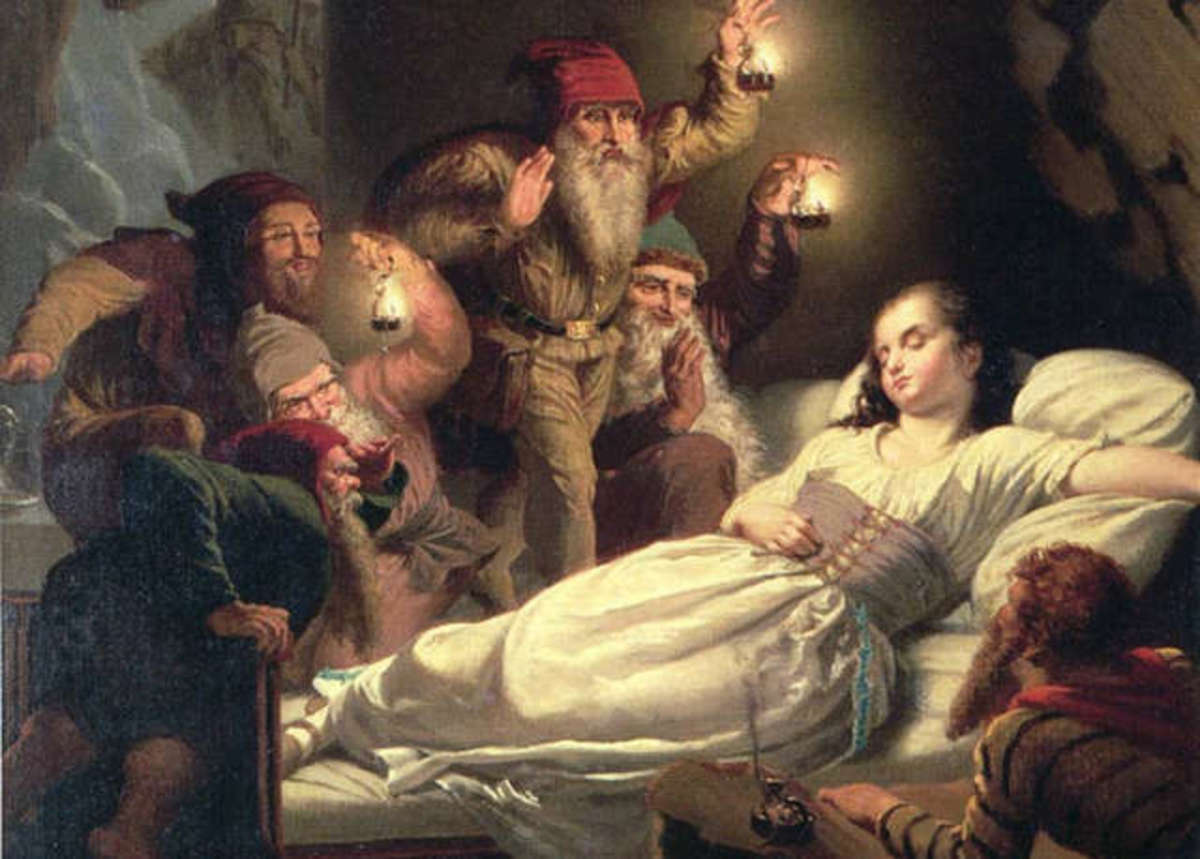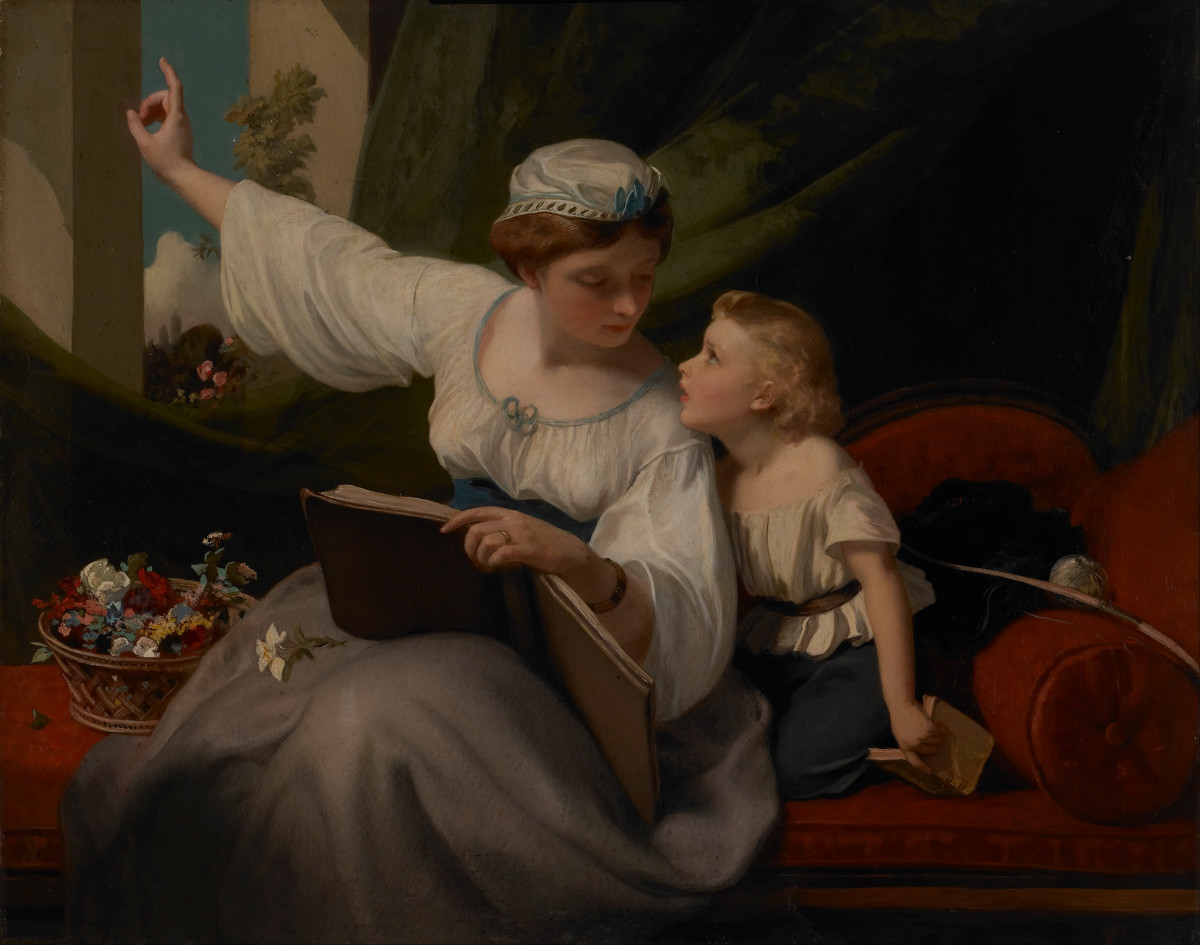Mirror, Mirror on the Wall – Catoptromancy or Mirrors in Divination
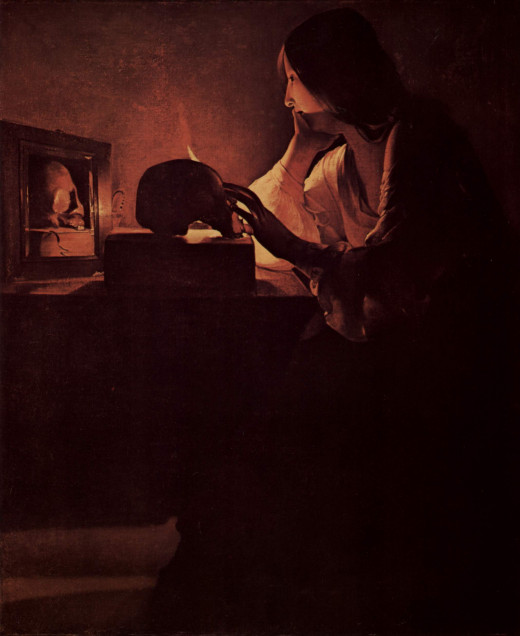
Catoptromancy is a word you do not hear very often. Its meaning, however, is something which just about everyone knows about. Catoptromancy is a word derived from Greek which basically means “Mirrors in Divination”. The Evil Queen in Snow White asking for information by saying “Mirror, mirror on the wall” and old folk games of looking into a mirror to see the image of a future spouse are two example of catoptromancy. Another example – albeit a rather indirect one –is the mirror in Alfred Lord Tennyson’s The Lady of Shalott: this mirror is not magical from the standpoint that it, like any other mirror, simply reflects what is happening. However, the mirror crack’d from side to side the moment the Lady of Shalott fell under the curse, thus foretelling her imminent death. Therefore, this can be considered an example of catoptromancy or the use of a magical mirror.
Catoptromancy should not be confused with crystal gazing, although both divinatory methods fall under the category of “scrying” – looking into water, a mirror, a crystal or any other transparent object in order to see the future or contact a supernatural entity.
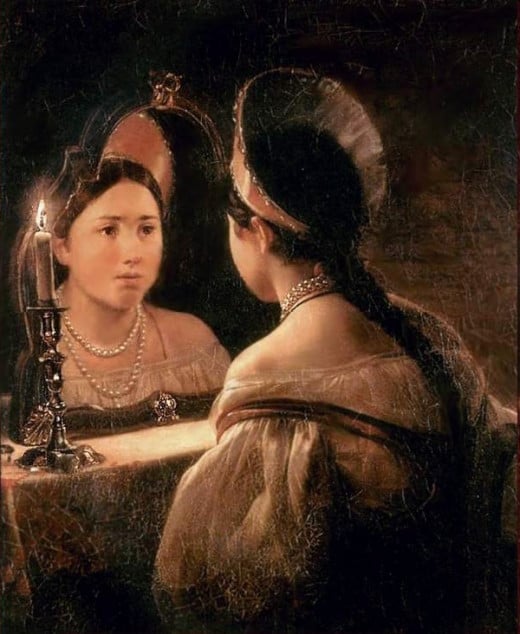
Folk Magic
Catoptromancy is quite common in the folk magic of nearly every country. For centuries, mirrors were considered powerful tools: if they could capture physical images of the world, perhaps they could also capture the supernatural. To this day, it is not uncommon in many Eastern European countries for surviving family members to cover the mirrors or turn them to face the wall after a person in the household has died, for fear the recently released soul may become caught inside the mirror.
Mirrors have often been used as a tool in folk magic. One of the most common applications of catoptromancy is the old ritual, which every culture seems to have a variation of, that involves a young woman looking into a mirror in the hopes that the face of her future husband will be revealed. Sometimes, this game would be taken quite seriously and there would be other rules regarding the age of the girl and what she may or may not have been wearing, as well as what day of the year was the best for performing the ritual.
Many young women may have been scared away from playing this game by the possibility that she may in fact see an image of the Grim Reaper or death in the mirror. This would mean that she would die unmarried and, most likely, at a very young age.
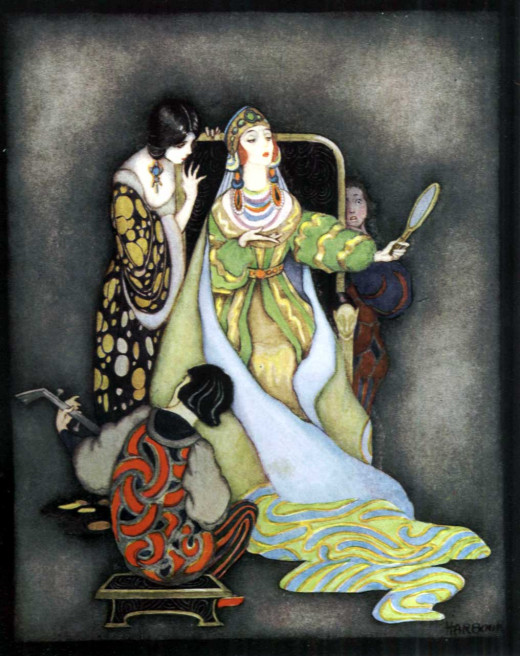
Snow White and the Seven Dwarfs
Grimms’ Schneewittchen or Snow White is one of the oldest and most famous stories in the world. Catoptromancy is a very important part of this tale – in fact, one could easily say that the entire story centers around catptromancy. The action all starts when the Evil Queen asks “Mirror, mirror on the wall, who is the fairest of them all?”
The Mirror or the Queen’s use of catoptromancy in the story is what causes her to want to kill Snow White. And, in turn, it is what leads the heroine into home of the Seven Dwarfs. The Mirror carries the story further by refusing to answer the Queen’s question – “Who is the fairest of them all?” – in a way she would like. Through the Mirror, the Queen knows that her first two attempts to murder Snow White have failed, and she eventually uses the seemingly effective poisoned apple to rid herself of her rival.
Spieglein, Spieglein an der Wand,
Wer ist die Schönste im ganzen Land?
- The Evil Queen’s invocation of the mirror in the Grimms’ original German
A magical mirror, in some form, has played a part in probably every adaptation of Snow White that has ever been made. This is not only because of the importance of catoptromancy in folklore, but also because this story expounds on the difference between vanity and beauty.
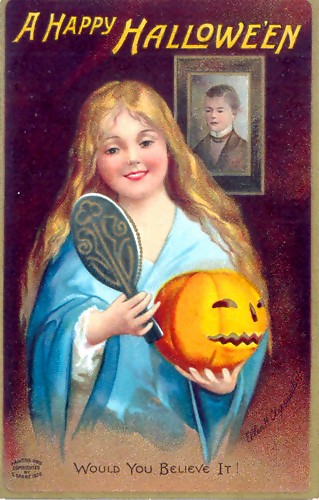
The Bloody Mary Halloween Game
With the exception of the Magic Mirror in Snow White, the best example of catoptromancy is the old Halloween party game “Bloody Mary”. The tradition developed out of the old fashioned attempt to see the face of your future spouse. The idea of calling on “Bloody Mary” started during the Elizabethan Era: A young, Protestant woman, hopeful for a good life with a future husband and lots of children, would look into the mirror and taunt the ghost of the Catholic queen Bloody Mary, a woman who had been physically unable to produce an heir.
As the years went by, the religious tensions which created the Bloody Mary game were forgotten. Eventually, the game was somehow combined with the urban legend of Bloody Mary, a horrifying and perhaps vengeful specter (again, with variations from different eras and cultures). After this happened, the idea of it being a ritual for the discovery your future spouse was jettisoned as well. Anytime Bloody Mary is called on now, it is just a simple dare or Halloween prank, usually played by young children, in order to cause a good scare.

© 2013 LastRoseofSummer2



